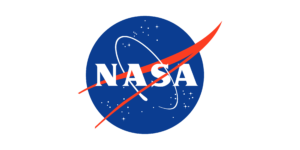WELCOME to the Environmental Management Office’s water quality information homepage. We encourage you to explore this website and all of its subpages. These websites provide valuable information on water quality, stormwater management, wetlands, and more. Any questions? Call 4-8332.
NASA LaRC is located on the small coastal basin of the Back River, a tidal estuary of the Chesapeake Bay. The Brick Kiln Creek runs along the western boundary of NASA LaRC, joining the northwest branch of the Back River, and drains approximately 40 percent of the Center. Tabbs Creek, which drains most of the rest of the Center and part of LAFB, flows in a northerly direction to join the Back River near the confluence of its northwest and southwest branches. A small portion of the area in the south drains to Tides Mill Creek. The East Area drains to the Back River. The local waterways are influenced by tides in the Chesapeake Bay. The waters in the local streams are designated by the State as Class IIa, estuarine waters where shellfish can be found.
LaRC’s land mass has 16 drainage basins with 16 associated outfalls (point sources of discharge). These outfalls are regulated by the Virginia Department of Environmental Quality (DEQ). These outfalls discharge to Brick Kiln Creek, NW Branch of the Back River, Tides Mill Creek, and/or Tabbs Creek. Ultimately, all of these waterbodies enter into the Chesapeake Bay.
Section 402 of the Clean Water Act established the National Pollutant Discharge Elimination System (NPDES) program to limit pollutant discharges into streams, rivers, and bays. In the Commonwealth of Virginia, the Department of Environmental Quality (DEQ) administers the program as the Virginia Pollutant Discharge Elimination System (VPDES). DEQ issues VPDES permits for all point source discharges to surface waters, to dischargers of stormwater from Municipal Separate Storm Sewer Systems (MS4s), and dischargers of stormwater from Industrial Activities, while Virginia Stormwater Management Program (VSMP) permits are issued to dischargers of stormwater from Construction Activities. Currently, NASA LaRC operates under three water discharge permits, two from Virginia DEQ and one from the Hampton Roads Sanitation District (HRSD).
- HRSD Permit No. 0085 allows NASA LaRC to discharge non-hazardous industrial wastewater and sanitary sewage to the HRSD sanitary sewer system.
- VPDES Permit No. 0024741, administered by the DEQ, authorizes NASA LaRC to discharge to surface waters in accordance with the effluent limitations and monitoring requirements set forth in the Permit. LaRC is allowed to discharge effluent from its operations to the surface waters of Virginia at six outfall locations. Ten other locations contain only stormwater runoff rather than process water, and no monitoring is required. Additionally, the permit allows LaRC to operate two car wash sites: the Vehicle Maintenance car wash location and emergency vehicle washing at the LaRC fire station. Car washing in other locations at LaRC is not authorized.
- MS4 Permit No. VAR040092, administered by the Virginia Department of Environmental Quality (DEQ) is a general permit for Small Municipal Separate Storm Sewer Systems (MS4). This permit requires that NASA LaRC develop, implement and enforce a storm water management program to reduce the discharge of pollutants from the Center to the maximum extent practicable. LaRC’s storm water management program must include minimum control measures as specified in the permit and best management practices (BMP’s) must be implemented to meet the control measures.
These permits set limits on the amounts of pollutants and the types of wastewater that are allowed to be discharged from Center operations. However, only rain should enter the storm drain. All LaRC employees and contractors must ensure that only those materials allowed under our water permits are discharged. Please contact us to find out about disposal alternatives where discharge to surface waters or the sanitary sewer is not permissible.
If in doubt, ALWAYS contact the Environmental Management Office prior to discharging the material.
Other Links and Interesting Information:
- VA DEQ Water Page – Water | Virginia DEQ
- Current information on Virginia’s impaired waters is available at: TMDL Development | Virginia DEQ
- The Final 2022 Virginia Report is available here: Integrated Report | Virginia DEQ
- Stream quality standards, applicable to the Back River and its tributaries, which are an important source of shellfish, crabs, and fish, are available at: Water Quality Standards | Virginia DEQ

